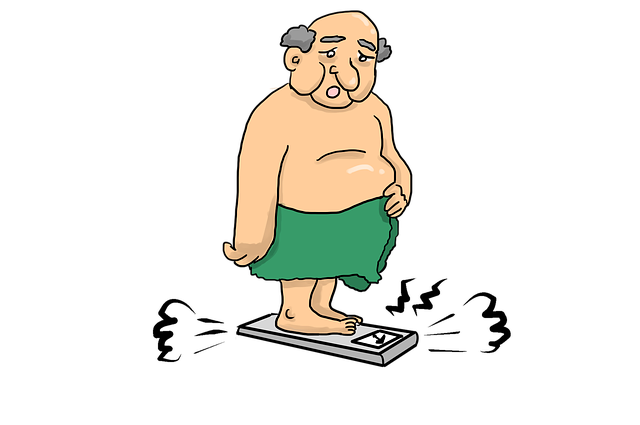Non-invasive fat loss treatments, leveraging technologies like radiofrequency, laser, and electromagnetic fields, offer safe and effective Fat Reduction Solutions. These procedures target and destroy fat cells, stimulating metabolism and enhancing fat oxidation, with minimal downtime. Popular methods include CoolSculpting, Liposuction, HIIT, and PRP therapy. Choosing these solutions requires prioritizing safety, efficacy, and clinical research support. Targeted Lipolysis, laser fat reduction, and emerging technologies like AI-driven body contouring show a promising future for safe, effective fat loss without surgery.
Discover the world of non-invasive fat loss treatments, a growing field offering effective solutions without surgery. This comprehensive guide explores cutting-edge technologies and methods for achieving desired body contours. From understanding the science behind fat reduction to evaluating safety and success rates, we delve into popular techniques like Targeted Lipolysis and CoolSculpting®. Learn about future trends, benefits of non-surgical options, and more, empowering you to make informed choices regarding your health and appearance.
Understanding Non-Invasive Fat Loss Treatments

Non-invasive fat loss treatments have revolutionized the way people approach weight management. Unlike traditional invasive procedures, these modern solutions offer safe and effective ways to achieve fat reduction without surgery or extensive downtime. The key lies in understanding how these treatments work and what they can achieve. Modern technology has enabled innovative techniques such as radiofrequency, laser, and electromagnetic fields, which target and break down fat cells, allowing the body to naturally eliminate them.
These fat reduction solutions are designed to stimulate metabolism and promote fat oxidation, leading to significant losses in stubborn areas like the abdomen, thighs, and arms. They are non-surgical, minimal downtime procedures that can be performed in a doctor’s office or clinic, making them easily accessible for those seeking an alternative to traditional weight loss methods. The effectiveness of these treatments lies not only in their ability to reduce fat but also in their safety profile, as they avoid the risks associated with invasive surgery.
The Science Behind Fat Reduction Technologies

The science behind fat reduction technologies has evolved significantly, offering a range of non-invasive treatments that target and reduce stubborn fat deposits. These advancements leverage a deep understanding of adipose tissue (fat cells) and their response to various stimuli. Key techniques such as radiofrequency, laser, and electromagnetic energy work by either heating or cooling specific areas of the body to stimulate lipid breakdown and enhance metabolism, leading to fat loss.
Research has shown that these technologies can effectively reduce subcutaneous and visceral fat, improving body contouring and overall health outcomes. For example, radiofrequency devices heat the deep layers of skin, causing collagen production and tightening while breaking down adipose tissue. Similarly, laser treatments target fat cells with specific wavelengths of light, triggering their destruction and subsequent removal from the body through natural processes. This shift towards non-invasive fat reduction solutions has revolutionized aesthetics, providing safer and more comfortable alternatives to surgical procedures.
Popular Methods for Effective Fat Loss

In the quest for achieving a slimmer, healthier body, non-invasive fat loss treatments have emerged as popular choices, offering effective fat reduction solutions without surgery. Among the most sought-after methods are CoolSculpting and Liposuction. CoolSculpting utilizes advanced cooling technology to freeze and eliminate targeted fat cells, making it a convenient, no-downtime procedure. Liposuction, on the other hand, involves suctioning fat from specific areas using a small cannula, providing more precise results.
Additionally, High-Intensity Interval Training (HIIT) and Platelet-Rich Plasma (PRP) therapy are gaining traction. HIIT combines short bursts of intense exercise with periods of rest, leading to increased fat burn even after the workout. PRP therapy uses the body’s own healing mechanism by injecting a rich concentration of platelets into problem areas, stimulating collagen production and promoting fat cell reduction. These non-invasive procedures offer individuals safe, effective ways to manage excess fat and achieve their desired body shape.
Benefits of Choosing Non-Surgical Options

Choosing non-surgical fat reduction solutions offers a range of benefits that make it an increasingly popular option for those seeking to enhance their figure. Unlike invasive procedures, non-surgical treatments are safe and effective, minimising recovery time and reducing the risk of complications. These methods utilise advanced technologies like laser, radiofrequency, or ultrasonic waves to target and break down fat cells without damaging surrounding tissue.
One significant advantage is the minimal downtime. Patients can resume their normal activities almost immediately after treatment, making it an appealing choice for individuals with busy lifestyles. Additionally, non-surgical options are versatile, treating specific problem areas such as the abdomen, thighs, or love handles. This targeted approach allows for more personalised fat reduction, catering to individual needs and preferences, and delivering satisfying results.
Evaluating Safety and Success Rates

When considering fat reduction solutions, evaluating safety and success rates is paramount. It’s crucial to opt for treatments backed by clinical research and approved by regulatory bodies like FDA or EMA. Non-invasive procedures vary widely in terms of effectiveness, so understanding the success rates specific to each treatment type is essential. Look for studies that assess long-term results, as temporary fat reduction may not meet your expectations.
Furthermore, safety should never be compromised. Check for any potential side effects, rare though they may be, and ensure the treatment is suitable for your medical history. Qualified healthcare professionals can offer guidance based on individual needs, ensuring both safety and satisfaction with desired fat loss outcomes.
Targeted Lipolysis: A Deep Dive

Targeted Lipolysis, also known as laser fat reduction, is a non-invasive fat loss treatment that uses concentrated light energy to target and break down adipose tissue. This procedure involves the use of advanced laser technology to precisely penetrate the skin and reach the fat cells beneath. Once the lasers hit the fat cells, they cause them to rupture, releasing the stored fat into the body where it can be naturally eliminated through metabolism and lymphatic system.
Compared to traditional liposuction, Targeted Lipolysis offers a more gentle approach with minimal discomfort and downtime. It’s an ideal fat reduction solution for people who want to shed stubborn fat in specific areas like the abdomen, thighs, arms, or buttocks. The procedure is non-surgical, making it accessible to a broader range of individuals seeking effective fat loss alternatives without the risks associated with invasive procedures.
CoolSculpting®: The Game Changer

CoolSculpting®, a groundbreaking non-invasive fat reduction solution, has taken the world by storm, revolutionizing the way we approach unwanted fat. This innovative treatment offers a safe and effective alternative to traditional surgical procedures, providing remarkable results for those seeking a slimmer silhouette. By utilizing advanced cryolipolysis technology, CoolSculpting® targets and freezes specific fat cells, leading to significant fat reduction over time without any incisions or recovery periods.
The beauty of this method lies in its ability to pinpoint precise areas of concern, whether it’s the stubborn fat bulges around the abdomen, love handles, or even the chin. With minimal discomfort, patients can expect a transformative process that yields visible outcomes. As a game-changer in the beauty and wellness industry, CoolSculpting® continues to empower individuals to embrace their confidence with improved body contouring and a enhanced sense of well-being.
Laser and Light-Based Therapies for Fat Reduction

Laser and light-based therapies have emerged as popular fat reduction solutions, offering a non-invasive approach to slimming down. These treatments utilize targeted lasers or intense pulsed light (IPL) to break down adipose tissue and stimulate collagen production. During a session, a handheld device emits light energy onto the treatment area, selectively targeting fat cells without harming surrounding skin. The heat generated by the laser causes these cells to shrink and eventually be eliminated by the body’s natural processes.
One of the key advantages of laser and light-based therapies is their ability to pinpoint specific problem areas, allowing for more tailored treatments. These non-surgical procedures are generally well-tolerated, with minimal discomfort and no recovery time. As a result, they’ve gained popularity among individuals seeking fat reduction without the risks associated with invasive surgeries.
Future Trends in Non-Invasive Body Contouring

The future of non-invasive fat loss treatments promises exciting advancements in the field of body contouring. As technology continues to evolve, we can expect more precise and tailored fat reduction solutions. One trend to watch is the integration of artificial intelligence (AI) and machine learning algorithms. These technologies can analyze a patient’s body composition, identify problem areas, and personalize treatment plans, ensuring optimal results with minimal side effects. AI-driven systems may also enable real-time monitoring and adjustments during procedures, enhancing safety and effectiveness.
Additionally, the focus will likely shift towards more holistic approaches that combine fat reduction with skin tightening and overall body sculpting. Hybrid treatments that utilize a combination of technologies, such as radiofrequency, laser, and ultrasound, will become more prevalent. These multi-modality treatments not only target adipose tissue but also stimulate collagen production, resulting in improved skin elasticity and a more contoured silhouette. With an increasing demand for natural and non-surgical options, future trends will also include innovative approaches that leverage the body’s own healing mechanisms to achieve long-lasting fat reduction.
